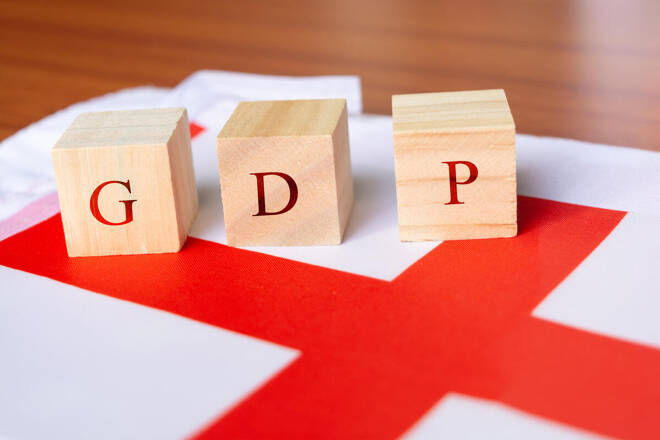Advertisement
Advertisement
UK GDP Numbers Open the Door for More BoE Rate Hikes
By:
Today, the UK GDP impressed, with household and government spending and manufacturing production delivering unexpected growth in Q2.
Highlights
- It was a busy morning for the GBP/USD, with the UK economy in the spotlight.
- Second quarter UK GDP numbers eased fears of a lengthy UK recession, despite interest rates at 5.25% and inflation elevated.
- This afternoon, US producer prices and consumer sentiment figures will also draw interest as monetary policy divergence bets shift in favor of the Pound.
It was a busy start to the day on the European economic calendar. UK GDP numbers for the second quarter, industrial and manufacturing production, and trade data drew interest this morning.
The UK economy expanded by 0.5% in June and 0.2% in the second quarter. Year-over-year, the economy grew by 0.4%. Industrial production jumped by 1.8%, driven by a 2.4% surge in manufacturing production.
Economists forecast manufacturing production to increase by 0.2% in June. However, economists expected the UK economy to stall in the second quarter after expanding by 0.1% in the previous quarter. Economists forecast the economy to grow by 0.2% in June.
According to the Office for National Statistics,
- The services sector saw growth of 0.1% in the quarter, with the production sector expanding by 0.7%.
- Household and government consumption drove growth in expenditure, partially offset by a fall in international trade.
- In the second quarter, real household expenditure increased by 0.7%, with government consumption expenditure up 3.1%.
- Export volumes declined by 2.5% in the second quarter, with services exports down 4.0%.
- Import volumes increased by 1.0%, driven by a 1.7% increase in goods imports, mainly machinery and transport equipment.
The latest GDP number will allow the Bank of England to target wage growth and elevated inflation with more interest rate hikes. On Monday, Bank of England Chief Economist Huw Pill held a live monetary policy report Q&A session. Significantly, Huw Pill noted that food inflationary pressure may not subside, suggesting more rate hikes.
GBP to USD Reaction to the UK GDP Report
Before the UK GDP Report, the GBP to USD fell to an early low of $1.26664 before rising to a pre-GDP Report high of $1.26908.
However, in response to the UK GDP Report, the GBP to USD fell to a post-stat low of $1.26847 before rising to a high of $1.27116.
This morning, the GBP to USD was up 0.25% to $1.27082.
Next Up
Later in the session, NIESR GDP estimates will also move the dial.
However, investors must also consider the US economic calendar. US producer price numbers and the Michigan Consumer Sentiment survey will be in focus. A more marked increase in the producer price index and improving consumer confidence would give the Fed more food for thought.
Economists forecast the producer price index to increase by 0.2% in July, following a 0.1% increase in June. However, economists expect the Michigan Consumer Sentiment Index to slip from 71.6 to 71.0.
Beyond the economic calendar, investors should monitor the news wires for Fed chatter throughout the day.
About the Author
Bob Masonauthor
With over 28 years of experience in the financial industry, Bob has worked with various global rating agencies and multinational banks. Currently he is covering currencies, commodities, alternative asset classes and global equities, focusing mostly on European and Asian markets.
Did you find this article useful?
Latest news and analysis
Advertisement
